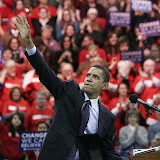One evening, I exit the
Fukushima train station into East Fukushima Square, past the old men sitting on
a bus stop bench smoking cigarettes, past schoolgirls pushing their bikes and
the swirls of starlings among the treetops. I walk past the Freshness Burger
stand and past the casino belching 80s pop music and the chimes and dings of
slots machines. Past the Mr. Donuts shop with the free sample donut holes on
the front counter. Across from my hotel, I duck into a 7–11 to get some sushi.
Everywhere, people are out enjoying the summer evening.
Fukushima
Prefecture has a total population of nearly 2 million. Yes, 1,817 people were
killed or missing here after the earthquake and tsunami (1) and yes, about 150,000
remain displaced by the tsunami and nuclear disaster (2) including some 30,000
to 60,000 who have left the province entirely (3, 4).
Nevertheless,
the city still has 290,000 residents going about their business. Consider that
the city is 35 miles—over winding mountain roads—from the tsunami-wrecked coast,
and 52 miles from the nuclear power plant. It’s only from afar that Fukushima
Prefecture, Fukushima city and Fukushima Daiichi seem synonymous.
After any
disaster, there are three groups of people: the dead, those whose lives will
never be the same, and those who are eager to return to normalcy. That line
between victim and bystander can be razor-thin. Some who had close calls want
to help, while others shrug and move on.
Consider an
example closer to home. In NYC the week after Hurricane Sandy, the people of Far
Rockaway, Queens, were flooded out of their homes. Fifteen miles away in
Brooklyn, people used flashlights and recharged phones from shared extension
cords, while in midtown Manhattan, life sailed on unperturbed. Now five months
later, Rockaway residents are still dealing with mold and FEMA. In Brooklyn
they have good stories to tell, and in Manhattan, if anything, they get miffed
about subway delays.
Fukushima City
is a place trying hard to find the new normal. You can find signs of the disaster
but you must know where to look. Here and there are public dosimeters
announcing the current radiation level the way a bank thermometer shows the
temperature. Here is a woman wearing a mask and gloves while she weeds. Over
there is an overgrown highway shoulder which municipal workers have refused to
mow. Here, a vacant lot where an earthquake-damaged building was torn down.
Sources: (1)
National Police Agency of Japan, (2) Asahi Shimbun, (3) Yomiuri Shimbun, (4) NYTimes.




